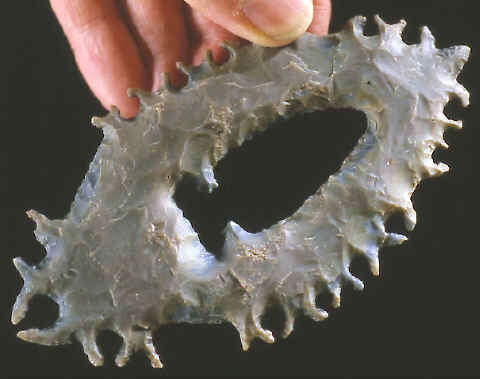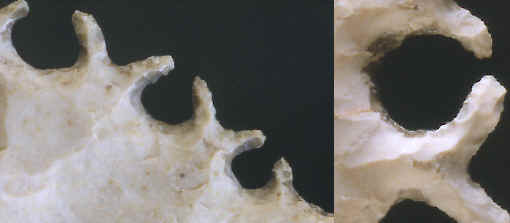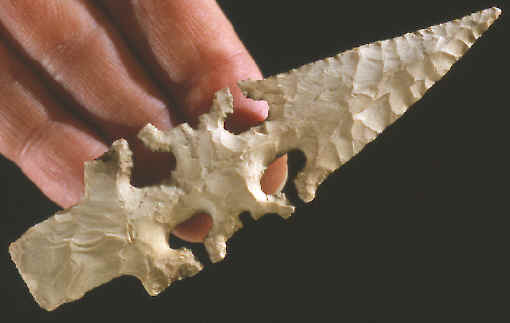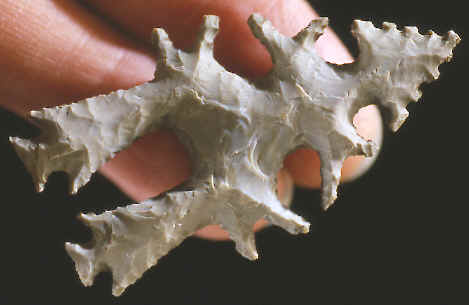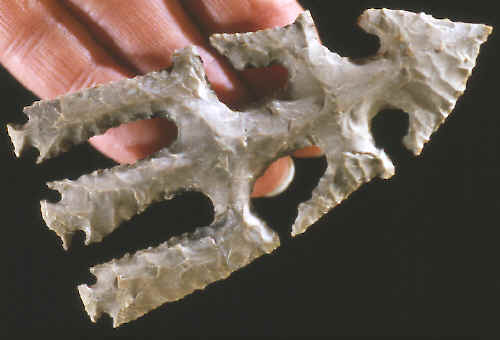|
|
|
The last real investigation to authenticate the Oklahoma eccentrics was in the 1940's. A study of many hundreds of them by Dr. Clements is reported by an Assistant Curator for the Southwest Museum in Los Angles where they once had ten of them on display. An article in the "Masterkey", July 1948 by Ruth Simpson focuses on Dr. Clements comments that not one of the hundreds of Oklahoma eccentrics he studied had any evidence of "a single specimen chipped with metal tools, a single point on which there are recent sharp fracture scars, or a single specimen showing acid pitting or any form of artificial weathering. But one problem with Dr. Clements verification of the Oklahoma eccentrics is that he was a physical anthropologist and not someone who specialized in lithic analysis. |
|
|
|
|
Today's level of knowledge of stone artifacts has greatly increased since the 1940's. Archaeologists have access to highly advanced scientific instruments and they have a much greater knowledge of lithic technology. It would be very difficult to find any archaeologist in North America, that specializes in lithic technology, to say that the Oklahoma eccentrics are old. |
|
|
|
|
One of the things that is curious about the Oklahoma eccentrics is the peculiar edge patina that is on a large number of them. A patina that is only on the edge would cover-up any recent pressure flaking and make the edge look older. A spectrographic analysis of those areas would identify any petroleum based material or any other odd out-of-place chemical that shouldn't be there naturally. |
|
|
|
|
The Tussinger eccentric's were made on a wide variety of different types of points, knives and bifaces. They were made on thick and thin, long and short and wide and narrow bifaces. The circumstance of such a diversity of biface reduction within one culture in North America, if the Tussinger cache was authentic, would make it quite unique. |
|
|
|
|
The Oklahoma eccentrics also incorporate different projectile point types in their designs. In this article, pictures show some that have Late Stone Age culture arrow point styles chipped into them. Others have Earlier period projectile point styles incorporated into the design. One has a stemmed base and the gray eccentric pictured at the top of this page has a corner notched point cut out of the center. |
|
|
|
|
The great Oklahoma cache of eccentrics are said to have come from Rhoades Mound. But Mack had a never ending supply numbering in the thousands. He sold them for many years out of his secret mound in his back yard as he and Sue moved into better homes. It doesn't matter what you believe, whether they are old or new. One thing is for sure, they were definitely made to impress all who see them and I for one am glad Mack found them. They are truly wonderful works of art. |
|
|
"REFERENCES"
1940,
"Study of the Oklahoma Eccentric Flints", by H. Holmes Ellis, 7
pages. |
|
